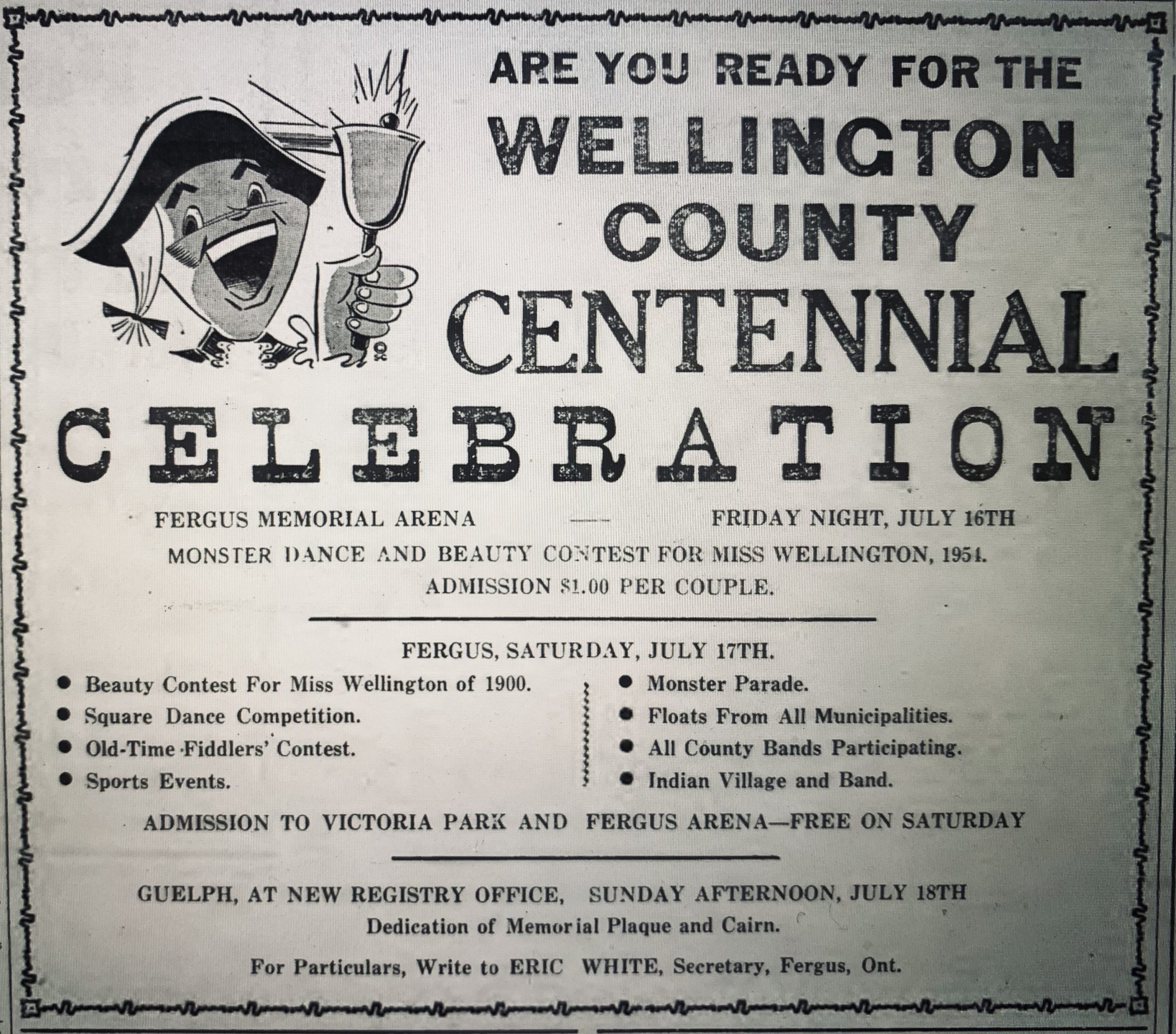The following is a re-print of a past column by former Advertiser columnist Stephen Thorning, who passed away on Feb. 23, 2015.
Some text has been updated to reflect changes since the original publication and any images used may not be the same as those that accompanied the original publication.
Last week’s column offered an account of some of the Wellington County 1954 centennial events celebrated in Fergus on July 16 and 17 of that year.
The parade described last week, estimated at three miles in length, took about 90 minutes to pass, and broke up at Victoria Park.
Most of the people who had lined the streets followed the end of the parade to the park for an afternoon of events, which were free of admission charges.
Organizers estimated the throng at 20,000, but Fergus had become accustomed to such crowds: the very popular Highland Games had drawn similar numbers in the previous couple of years.
By the time the parade had ended, a baseball game was underway and games ran continuously through the afternoon.
Most people gathered to hear the speeches. Most of the orators tried to be brief, but there were too many of them, and the crowd soon grew restive, anxious to see the rest of the program.
Warden Bert Palframan acted as chairman. A highlight was a telegram from the Duke of Wellington. The centennial committee had tried to get him to attend personally.
The Duke wished success to the celebration, concluding that the “Wellington family greatly value this link with Canada. I will be with you in spirit.”
Those attending spent the rest of the afternoon enjoying the various scheduled events: a trained horse show, the midway, a mock Indigenous village.
A highlight was the judging of the beard growing contest. Fergus men dominated, with Joe Fletcher, Mel Nixon, Lloyd Osburn and Doug Kerr the winners.
Also popular with the crowd was the “Miss Wellington 1900” competition, for girls and women in period dress. Sally Harrison, a 13-year-old from Minto, took first place, followed by Mrs. Bill Kane of Fergus and Mrs. Gordon Gregson of Hillsburgh.
Refreshment stands, operated by volunteer groups, struggled to keep up with the demand for food and drink. Organizers were annoyed to see several uninvited food vendors and other opportunists set up booths just outside the grounds.
The program went into high gear in the evening, with fiddling and square dance competitions and a dance at the Fergus Arena. The old time fiddling contest drew 16 contestants.
The champion, to no one’s surprise, was 84-year-old Charles Dyer of Fergus. He had been a top local fiddler for as long as most people could remember. His nephew, Murray Dyer of Rockwood, placed second, and John Lang of Kenilworth ranked third.
Next was the square dance competition, with 10 entrants. Al Watson of Guelph called for the entire two hours. Puslinch Township placed first, followed by Guelph Township, Maryborough and West Garafraxa.
During the weekend, each municipality had accrued points for its placing in the various competitions. At the conclusion of the dancing, Bruce Freure announced that Fergus had captured the most points and a silver cup, with 25 points. Puslinch followed with 22 points, then Guelph Township with 20.
The evening concluded with a massive display of fireworks in Victoria Park. Afterward, hundreds of people did not want to go home: they walked up and down the Fergus main street, viewing the historical displays, until the early hours of the morning.
Sunday, July 18, featured only one event: the unveiling of the historical cairn in Guelph in front of the new Land Registry building on Douglas Street. The City, and in particular the Guelph Mercury and its historian, Verne McIlwraith, had been annoyed that the county centennial was not held in Guelph. Rev. W.A. Young performed the dedication, with music supplied by the Salvation Army band and the carillon at nearby St. George’s Church. The crowd, though, numbered only about 200. The event was subdued and restrained, much in contrast to the festivities in Fergus the day before.
Freure and his centennial committee had put the program together with a $6,000 grant from the county.
When all the accounts were tallied, they were delighted to report a small surplus, despite the fact most of the events had been free.
They had brought off their “once in a hundred years” celebration splendidly.
*This column was originally published in the Advertiser on Aug. 6, 2004.



